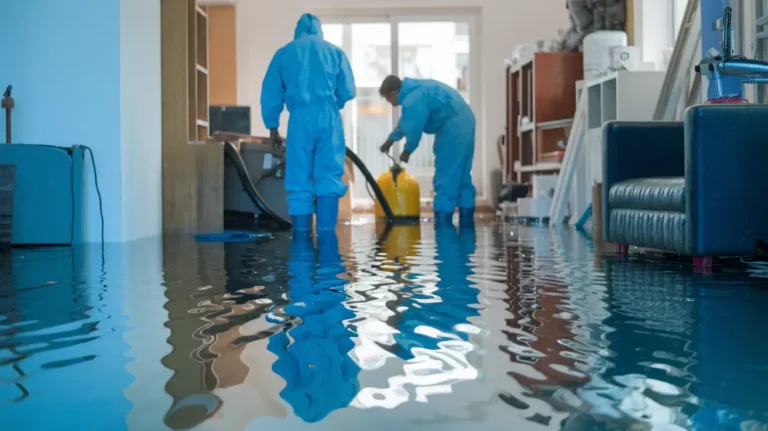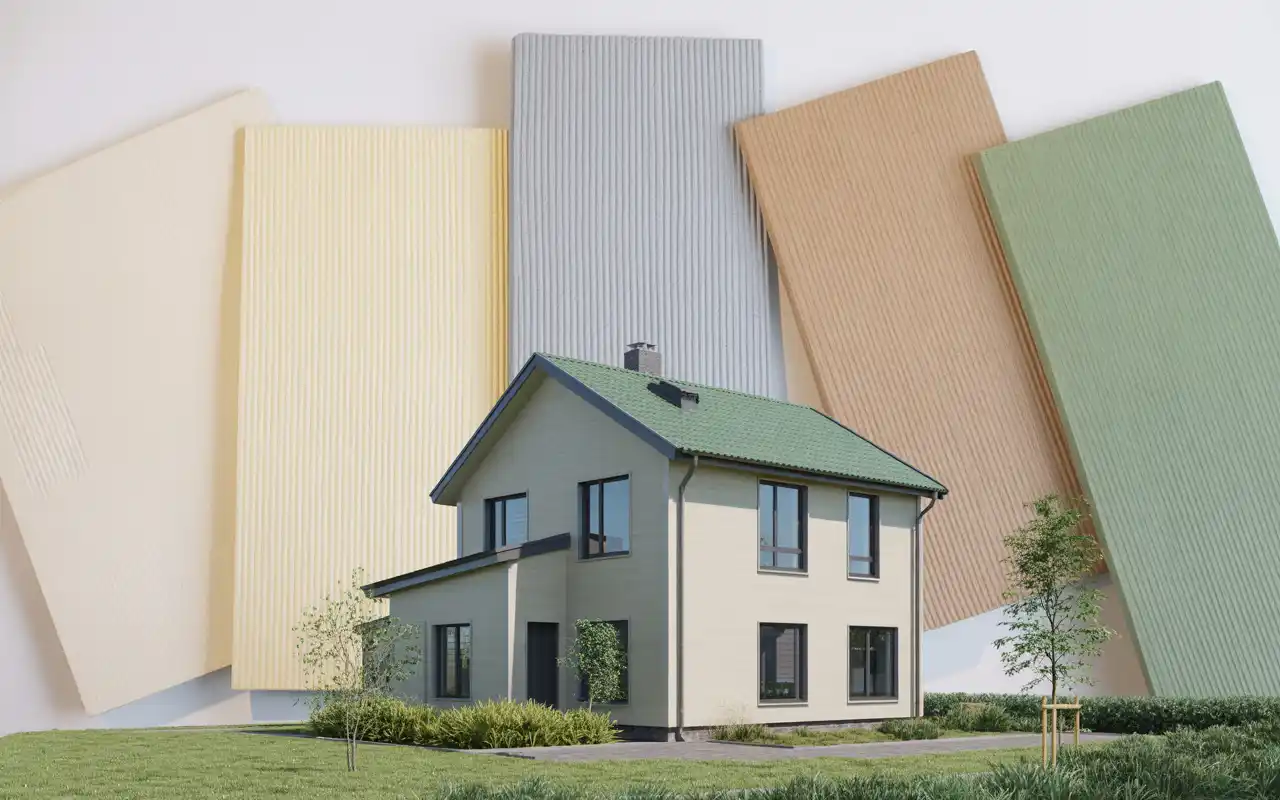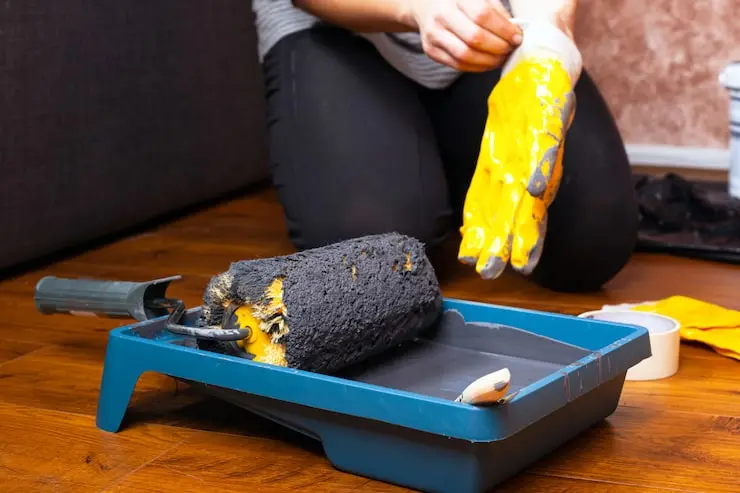The national water damage restoration cost averages about $3,842, but project prices often span from a low of $450 to over $16,000 depending entirely on the severity of the water damage. This huge range exists because the cost is driven by critical factors like the source of the water, how long it sat, and whether mold remediation is needed. Understanding these factors helps you control the final home water damage repair cost.
The true expense is determined by two industry factors: the water’s contamination level and the extent of structural saturation. We break down the real costs for San Diego homeowners and explain how smart preparation can save you thousands.
Table of Contents
The True Cost Drivers: IICRC Standards and Severity

To accurately estimate your water damage restoration cost, you must first know the source of the water. Professional water damage restoration companies use two standardized systems from the Institute of Inspection, Cleaning and Restoration Certification (IICRC) to assess a job: Categories and Classes.
Water Categories (Contamination Level)
The Category determines the level of health risks and the safety gear required, directly impacting labor costs and demolition scope.
Category | Source (Type of Water) | Safety and Cost Impact |
Category 1 | Clean Water (Least Costly) | Water from sanitary sources like broken water supply pipes, toilet tanks, or faucets. Presents the lowest health risks and generally requires less extensive demolition. |
Category 2 | Grey Water (Moderate Risk) | Water containing contaminants like detergent from a washing machine overflow or discharge from a dishwasher. Requires rapid extraction and disinfection protocols. |
Category 3 | Black Water (Highest Cost) | Grossly contaminated water from sewage backups, river floods, or standing water that has become stagnant. Requires specialized containment, biohazard cleanup, and total removal of porous materials (e.g., drywall, insulation). |
Water Classes (Saturation Level)
The Class determines how long the drying equipment must run, which is the key factor in the mitigation phase’s labor and equipment rental costs.
- Class 1 (Minimal Intrusion): Affects only a small area. Materials have low permeability, like concrete. May dry in a day.
- Class 2 (Significant Absorption): Affects an entire room and has worked up walls. Structural materials are damp.
- Class 3 (Severe Saturation): Water came from overhead (like a burst pipe) and saturated ceilings, walls, and insulation. This requires intense drying efforts over several days.
- Class 4 (Specialty Drying): Hardwood floors or brick walls are severely saturated. This requires specific, long-term drying techniques, often taking weeks and driving up the total labor and equipment expenses.
The speed of your response is critical. Acting within the first 24 to 48 hours can reduce your total cost to repair water damage by up to 40%. Delays dramatically increase the chance of mold growth and force the restoration into a higher, more costly Class.
Average Water Damage Restoration Cost by Type of Repair
Different repairs cost different amounts. Here are typical ranges in 2025:
Repair Type | National Range* | Notes / Local Adjustments |
Roof leak repair | $400 – $2,000 | If the leak caused interior damage too |
Ceiling repair | $450 – $1,600 | Replace drywall, patching, paint |
Appliance / plumbing damage | $175 – $500+ | Depends on part replacement |
Basement / lower level | $500 – $2,800 | More if structural repairs needed |
Drywall repair | $300 – $850 | Includes removal, rehang, paint |
Flooring repair / replacement | $200 – $3,000 | Hardwood, tile may cost more |
Bathroom fixture / plumbing | $140 – $800 | Leaks, faucets, shower pans |
Mold removal / remediation | $1,200 – $3,800+ | Varies by area and severity |
These ranges come from cost guides like Angi’s 2025 data.
In San Diego County, ranges tend to run from $1,200 up to $7,500, depending on how big and how severe the water damage is.
One local estimate: a “minor clean-water leak in 1–2 rooms” might cost $1,200–$2,500, while a severe flooding scenario with structural repairs could push $5,500 or more.
Water Damage Restoration Cost Per Square Foot
Restoration pros often quote the mitigation and drying phase by the affected area’s square footage. This simple metric helps estimate the resources needed for extraction and drying.
The general water damage restoration cost per square foot ranges between $3 and $7.50. However, this price depends entirely on the Category of water.
Type of Water | Average Cost (Per Square Foot) |
Category 1 (Clean Water) | $3.00 – $4.50 |
Category 2 (Gray Water) | $4.50 – $6.50 |
Category 3 (Black Water) | $6.50 – $7.50 per square foot and up |
For a standard 215-square-foot area, the total damage restoration cost for demolition and drying in San Diego could range from $2,596 to $2,737, not including reconstruction.
Water Damage Repair Cost by Area

The total cost to repair water damage is driven by the specific area affected and the construction materials involved. Damage in a utility room is cheaper to fix than damage in a high-end kitchen.
Basement and Flood Damage Repair Cost
The basement is one of the most common and costly areas for water damage.
- Basement Flooding Repair Cost ranges widely from $500 to over $10,000. An inch of clean water from a burst pipe costs far less to fix than two feet of Category 3 Black Water contamination.
- Cleaning up after an appliance (like a faulty water heater or washing machine) costs around $5,000 on average, regardless of location.
- Since basements often involve concrete and large open areas, Category 3 sewage backup requires extensive disinfection, structural drying, and disposal of all porous materials. This usually requires a total budget closer to the high end of the scale.
Floor, Wall, and Ceiling Repairs
Once the drying process is complete, reconstruction begins to restore the area to pre-loss condition.
Type of Repair | Average Cost to Fix Water Damage | Notes |
Drywall Repair | $4.05 – $7.45 per square foot | Includes hanging, taping, texturing, and priming. Water damage wall repair cost increases if structural framing is affected. |
Subfloor Replacement | $5.05 – $10.00 per square foot | Necessary if the subfloor (plywood or OSB) has absorbed too much water or has begun to rot. |
Water-Damaged Floors | $200 – $3,000 | Varies by material: Hardwood flooring can often be salvaged if the response is fast. Carpet and its padding are often a total loss due to rapid water absorption. |
Wall/Framing Repair | $6.06 – $10.12 per square foot | Required if water saturation has affected the interior wall framing and studs, not just the drywall. |
The High Cost of Hidden Structural Damage
Simple mitigation only covers water extraction and drying. The largest, unbudgeted expenses are often hidden structural repairs. This damage is what drives the project total well above the national average and past $16,000.
Sill Plate and Floor Joist Replacement
Severe water intrusion especially from long-term leaks or deep saturation can compromise the structure supporting your home.
- Sill Plate Replacement: The sill plate is the wood beam resting directly on your foundation. If this rots, it requires lifting the house slightly to replace. This critical repair costs $120 to $200 per linear foot. A full project can total $10,000 to $40,000, depending on the foundation type and extent of the damage.
- Floor Joist Replacement: If the water has also damaged the floor joist supports, replacing them adds $350 to $1,000 per joist.
These structural costs are common after a ruptured water pipe incident, which can push total costs into the $5,000 to $70,000 range.
Labor, Equipment, and Mold Remediation Costs
The day-to-day costs of restoration are dominated by labor and specialized equipment.
Labor Costs to Repair Water Damage
The process requires skilled technicians for the mitigation and separate trades for the reconstruction.
- Water Damage Technician Labor: A technician who handles the mitigation (extraction and drying) earns an average hourly wage of about $20. This is the labor rate used for the majority of the time-intensive drying phase.
- Specialized Labor: Structural repairs (like sill plate replacement) require foundation repair contractors who may charge around $200 per hour.
Equipment and Drying Rental Costs
In a typical Class 3 or 4 loss, powerful equipment must run 24/7 for several days to achieve “dry standards.” These charges accumulate daily.
Equipment Type | Estimated Daily Rental Cost |
Air Movers/Axial Fans | $35 – $40 per day |
Small Dehumidifiers | $65 per day |
Extra Large Dehumidifiers | $105 per day |
Air Scrubbers (HEPA Filtration) | $45 per day |
The Cost of Mold
If water sits for over 48 hours, mold growth is highly likely. Mold remediation requires specialized protocols and adds thousands to the final bill.
- Mold Remediation costs $10 to $25 per square foot. The average cost for professional removal is $2,300, but complex, extensive whole-house remediation can reach $10,000 to $30,000.
- Mold Inspection and Testing is often necessary before remediation can start. Initial testing starts at approximately $239 for the first two samples, including lab fees.
Financial Protection: Navigating Insurance and Policy Exclusions
Your total out-of-pocket water damage restoration cost depends heavily on your homeowners insurance policy. Understanding exclusions is the most valuable step you can take for financial defense.
Sudden and Accidental vs. Gradual Damage
Standard policies cover damage that is “sudden and accidental,” such as a burst pipe or a sudden roof leak. They almost always exclude two types of damage:
- Gradual Damage: Leaks that happen slowly over time, like corrosion from old plumbing or rot from a long-term roof leak. These are considered maintenance issues and are not covered.
- Negligence: Claims may be denied if you fail to maintain your home (e.g., failure to heat the home, leading to a frozen pipe burst).
The Critical Policy Endorsement
The single most common claim denial is for water backing up through sewers or drains, or damage from a sump pump failure. This is typically Category 3 Black Water damage, which is the most expensive to mitigate.
- Water Backup and Overflow Coverage: This separate endorsement is essential. It is not part of a standard policy, but it covers damage from sewer and sump pump issues.
- Cost vs. Risk: This optional coverage typically costs only $150 to $300 annually.This small fee protects you from potential out-of-pocket costs that could easily reach $7,500 or more.
Claim Documentation Checklist
To prevent claim denial, proper documentation is required:
- Document Everything Immediately: Take clear photos and videos of water levels, the source of the water, and structural damage before cleanup.
- Save Physical Evidence: Keep small samples of damaged materials like carpet, drywall, or insulation for the insurance adjuster.
- Retain Receipts: Save all receipts for emergency repairs and replacement items.
DIY vs. Hiring a Water Damage Restoration Pro
Minor water damage repair cost might be manageable for homeowners. If a small area of hardwood flooring or tile is affected by a clean water leak that lasted less than a few hours, you might be able to dry it yourself.
However, if the affected area is large, involves contaminated water, or has soaked into the subfloor, professional help is necessary:
- Health Risks: Category 2 gray water and Category 3 black water carry significant health risks from biological contamination.Specialized protective equipment and disinfection are required.
- Hidden Moisture: Professionals use moisture meters and thermal imaging to find hidden water inside walls, which prevents future mold growth.
- Insurance Requirement: Most homeowners insurance policies require professional remediation services to ensure the work is done correctly and to “dry standards”.
For comprehensive and guaranteed drying, contact Water damage restoration services in San Diego like San Diego Home Remodeling.
San Diego Local Factors: Why Costs Fluctuate Locally
The water damage restoration San Diego CA market has unique cost variables that influence the final price:
- Coastal Humidity: San Diego’s coastal climate, especially in areas like Carlsbad and Encinitas, increases the risk of secondary mold damage. This necessitates faster, more aggressive use of dehumidifiers and air scrubbers, increasing the initial equipment costs.
- Permit Fees: Major structural repairs or substantial remodels require permits. A minor interior remodel or repair typically requires a plan review fee of around $389 and a permit fee of $496 (FY 25/26 estimates). If the damage is catastrophic, the City of San Diego has historically waived fees for building and demolition permits following major storms to aid homeowners.
- Floodplain Regulations: If your property is in a floodplain and suffers “substantial damage” (repair cost exceeds 50% of the home’s value), federal regulations may require you to elevate or floodproof the structure before rebuilding. This significantly escalates the total project cost.
How San Diego Home Remodeling Gets Its Cost Data
At San Diego Home Remodeling, we base our estimates on:
- Local project history (we track dozens of water restoration jobs per year)
- Industry-standard data sources like Angi, HomeAdvisor, and restoration associations
- Adjustments for San Diego labor, permit costs, material availability, and coastal humidity
- Use of IICRC certified processes and inspections to validate moisture levels
Our goal: give estimates that reflect real San Diego conditions, not generic U.S. averages.
Conclusion
Understanding the water damage restoration cost can help homeowners make informed decisions and avoid unexpected expenses. The total cost depends on factors like the type of water, severity of damage, and necessary repairs. Acting quickly can significantly reduce expenses and prevent long-term structural issues.
If you’re facing water damage, don’t wait, San Diego Home Remodeling is here to help. Our expert team provides fast, reliable, and affordable restoration services to bring your home back to its best condition. Contact us today for professional water damage restoration in San Diego and get a free estimate!
FAQs About Water Damage Restoration Cost
How long does water damage restoration take?
The mitigation (drying) phase usually takes three to seven days. However, the total project time, including reconstruction (replacing drywall, flooring, etc.), can take several weeks or months, especially for major structural repairs.
Is mold removal included in the water damage restoration cost?
No. Mold remediation is typically a separate service requiring specialized containment and air scrubbing.While water damage companies try to prevent mold, once mold growth is confirmed, it adds $10 to $25 per square foot to the total bill.
Will insurance cover the cost to repair water damage from a slow leak?
Generally, no. Insurance covers “sudden and accidental” events.Slow, gradual damage caused by old, corroded plumbing or ongoing neglected maintenance is usually excluded from coverage.
What is the average cost to fix water damage after a burst pipe?
The water leak damage repair cost from a single burst pipe can range from $1,000 for minor flooding to over $4,000 if the pipe itself needs replacement.If the water was Category 3 Black Water (sewage) or caused structural damage, the cost quickly climbs over $7,500.







